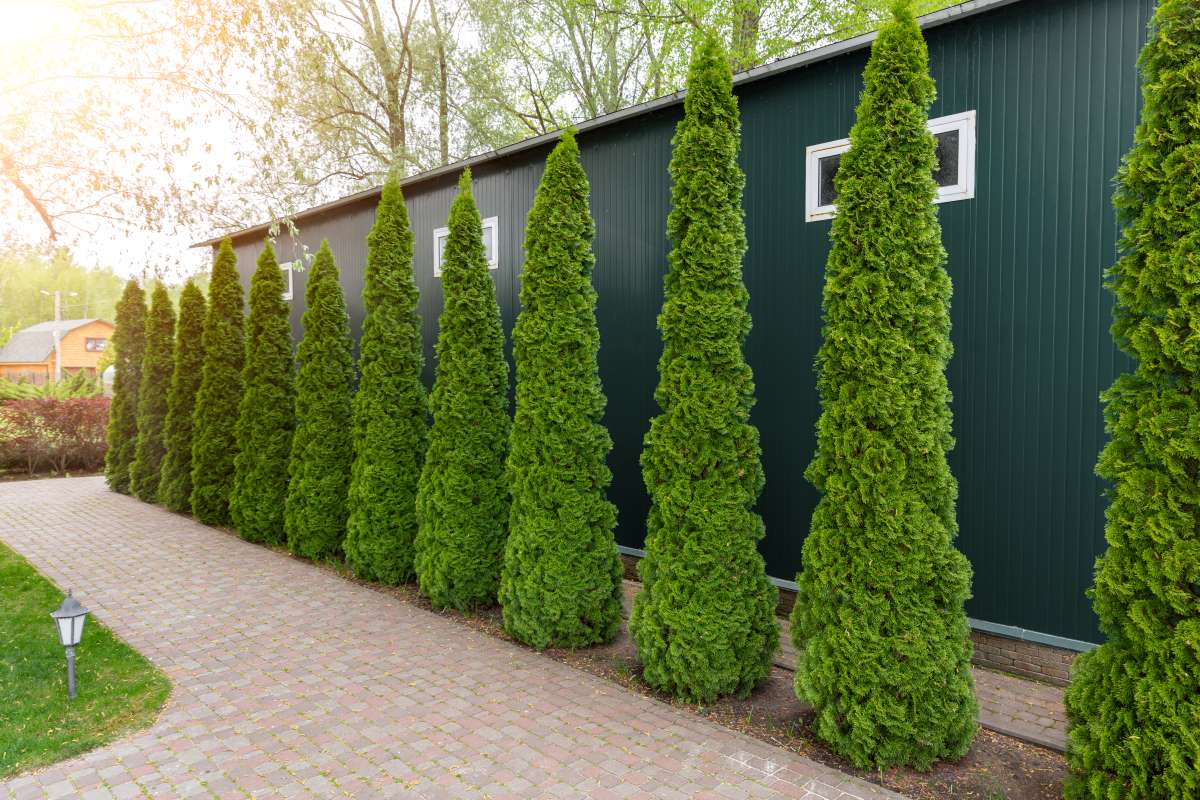- Home >
- Christmas Trees
Christmas Trees for Sale - Buying & Growing Guide
Do You Know Your Growing Zone? i Growing zones help determine if a particular plant is likely to grow well in a location. It identifies the average annual minimum winter temperatures across the U.S. provided as a map by the USDA.
18 Results
-
Growing Zone(s): 3-7$99.95
-
Growing Zone(s): 4-8$34.95
-
Growing Zone(s): 5-8$24.95
$29.95Save up to 16% -
Growing Zone(s): 2-6$79.95
-
Growing Zone(s): 3-7$59.95
$99.95Save up to 40% -
Growing Zone(s): 2-7$49.95
-
Growing Zone(s): 5-9$19.95
-
Growing Zone(s): 2-8$99.95
$119.95Save up to 16% -
Best SellerGrowing Zone(s): 3-8$19.95
-
Growing Zone(s): 2-8$99.95
Christmas Trees for Sale – Buying & Growing Guide
There are few trees more recognizable than the Christmas tree. While this style of tree is iconic, there are several varieties within the group. Selecting the right type depends on a number of factors, including your region’s climate, your fragrance and needle preferences, and more. An added benefit — Christmas trees make excellent privacy trees as they grow throughout the year.
How to Choose a Christmas Tree
There are five common types of Christmas trees: fir, pine, spruce, cypress, and cedar. The best option for you will depend on your region’s climate, how much fragrance you prefer, and other additional factors.
Firs are the most popular type of Christmas tree due to their sweet fragrance and strong needle retention. These trees prefer cool and moist conditions, so they may not be a viable option if you live in a hot, arid climate.
If you do live in a hotter climate, you should consider using a pine for your Christmas tree. They can be grown almost anywhere, and their needle retention is usually quite good. Pines are also an excellent option for people who find the scent of fir trees to be a little overwhelming, as their fragrance tends to be moderate. But they do produce a lot of sap — you can expect getting them inside your house for Christmas to be a messy process.
Spruces are known for their stiff branches and needles, which makes them great for holding ornaments. Varieties such as the Blue Spruce and White Spruce are also known for their striking color.
Cypresses are another type of Christmas tree that grows well in warmer climates. One downside, though, is that their branches are often too flexible for heavier ornaments.
Finally, cedars are similar to pines and cypresses in that they are commonly used for Christmas trees in regions that are too hot for firs. The Eastern Red Cedar is particularly popular in southern states, but you should be aware that they tend to dry out rather quickly — once cut, don’t expect them to last longer than three weeks.
Types of Christmas Tree
| Type | Growing Zones | Mature Height | Sun | Features |
| Balsam fir, Abies balsamea | 3-6 | 50-70 feet | Full sun to part shade: 4-8 hours | Dark green needles and great fragrance |
| Douglas fir, Pseudotsuga menziesii | 4-6 | 40-80 feet | Full sun: 6-8 hours | Flat needles and a pyramidal to cylindrical habit |
| Noble fir, Abies procera | 5-6 | 50-100 feet | Full sun to part shade: 4-8 hours | Neat conical shape and short needles |
| White fir, Abies concolor | 3-7 | 40-70 feet | Full sun to part shade: 4-8 hours | Vibrant needles similar to blue spruce but soft |
| Eastern white pine, Pinus strobus | 3-8 | 50-80 feet | Full sun to part shade: 4-8 hours | Long needles and noticeable cones |
| Blue spruce, Picea pungens | 2-7 | 30-60 feet | Full sun: 6-8 hours | Perfect cone shape, surprisingly vibrant needles |
| Norway spruce, Picea abies | 2-7 | 40-60 feet | Full sun: 6-8 hours | Large pyramidal form with pendulous needle clusters and cones |
| Deodar cedar, Cedrus deodara | 7-8 | 40-50 feet | Full sun: 6-8 hours | Branches grow horizontally with drooping ends |
| Eastern red cedar, Juniperus virginiana | 2-9 | 30-60 feet | Full sun: 6-8 hours | Attractive reddish bark, consistent foliage |
| Leyland cypress, Cupressus × leylandii | 6-10 | 60-70 feet | Full sun: 6-8 hours | Lovely oval shape and with dense evergreen foliage |
How Long Does It Take to Grow a Christmas Tree?
It’s important to note that this project requires some patience. According to the National Christmas Tree Association, the average growing time for Christmas trees is seven years. But while your Christmas trees are still growing, they can also serve as effective privacy trees, which provides several benefits. In addition to preventing neighboring properties from being able to see into your yard, privacy trees block some sound as well as block wind, making your outdoor space a more pleasant place to relax.
Caring for privacy trees is simple, as they generally only require watering and some light trimming as needed. These trees provide you with one of the easiest ways to make your yard more green and vibrant before they become your holiday tree.













